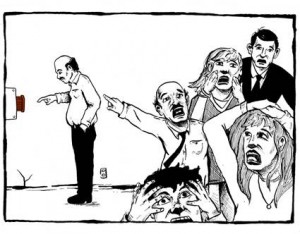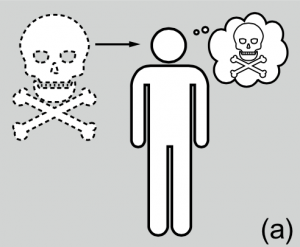Meaning is created through experience and thus in most situations meaning is subjective. This is a bold statement and although many linguists who believe meaning is arbitrair would argue the opposite, there are also theorists specialized in the field of the famous nature-nurture debate who say that there are many ways of looking at meaning and the way we as humans are formed by and form meaning (which I will not contradict). It is interesting to see how this is solidified in the world of design. Let’s look at an example how a meaning and relation and also feeling with and through design is constituted. When looking at a beautiful design, the way we constitute a feeling and a rich experience is formed and shaped by the contrast to other experiences we have in life. The ‘richness’ of the experience through a design (or any other experience in life) is formed through comparison with other types of experiences. Designers and design-scholars agree to an extent that they believe that design can be used as a tool to invoke positive behaviour and emotions. Some scholars also believe that negative design can produce these same feelings (Fokkinga & Desmet 2013).

- http://cdn.ttgtmedia.com/rms/dataCenter-Virtualization/redbuttonsmall.jpg
When thinking about an easy way to explain all the different possible negative designs that are out there, one is relatable to by everyone. The red button. And with the red button I mean the red coloured button which states “don’t push this button”. THAT red button. While we are intrigued by that red button, we are indulged by it in a sense that it liberates us from a seduction that is irresistible. We perceive this button as something we want to indulge in but shouldn’t do because of social norms or because we know that it might not be good for us. As a result we might see this button as something we know we want to push but shouldn’t because if we do our safety might be in jeopardy. This is a form of negative design that can be described as intriguing but the only thing is that one might say this does not create a ‘richer’ experience.

- Fokkinga, Steven F., and Pieter MA Desmet. “Ten ways to design for disgust, sadness, and other enjoyments: A design approach to enrich product experiences with negative emotions.” IJD International Journal of Design, 7 (1), 2013 (2013).
An example of a negative design with a richer experience can be a violent video game like the widely popular GTA (Grand Theft Auto) in which you play a character that can do everything you can do in real life but from which the result of your actions doesn’t effect real life, say crash a car or rob people. This is a sadistic emotion that at the same time can create a richer experience for the user. users perceive the world full of attractive opportunities that beg to be tried out and do things they wouldn’t normally do because it is all in a playful and less serious manner. This is because the designer created a distance between the game and real life, this is called a ‘detachment frame’ as seen in the image above. This frame can be either mental or physical to keep the user from danger.
How can we use this in our project? it is a way of thinking that starts from the negative aspects that a design can provoke, we can look at the problem of distraction in the workplace as the main factor of disturbance and influence on productivity for example. How can we create a mental or physical barrier for the worker so that distraction might still exist but doesn’t influence the worker? We don’t have to SOLVE problems we come across but we can also make the effects unnoticeable.







